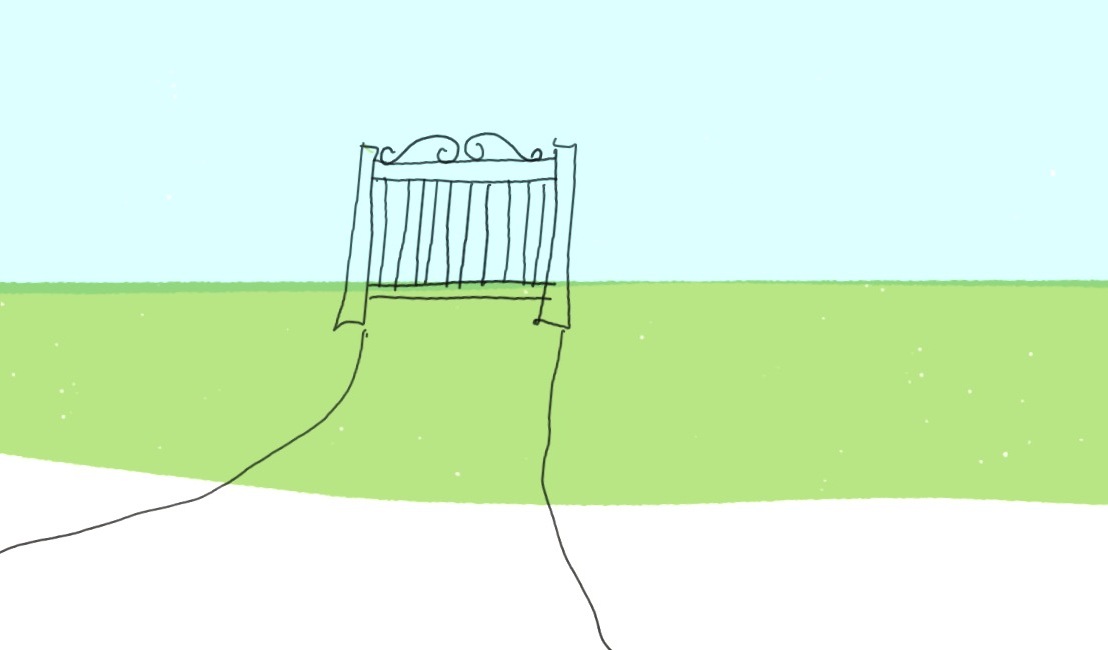
Last post I made up a term. Frequency of reapparition. I also said I would try to define it, which is a tough task in itself, but I will do my best. That’s as much as I can do, logically, physically, practically and metaphysically. Here it goes.
In short, the idea of thought reapparition comes from the fact that we can’t think two things at once. I compare this to the Pauli exclusion principle in quantum physics. No two particles can exist in the same exact location at the same time. They can’t occupy the same space. In the same way, it seems clear to me that the mind reserves space for one thought at a time. This doesn’t mean that thoughts can’t be close to each other in time. A string of thoughts can be very rapid, a series of 10 thoughts (arbitrary number) can happen in a single second. That’s the essential principle.
Thoughts come and go. They appear, disappear and reappear. If the mind is left on its own without stimulus, stimulation, influence from the outside world, it will continue to think. If you do this (for instance some types of meditation), you will notice all sorts of thoughts pouring in. Most of them should feel familiar. They are things you have thought before. Nothing new. No new thing. In this sense, they are not random. But in some senses, they are indeed random-ish. They seem to come out of nowhere, like a sudden visual sense of an old home, or a relative, or a type of food, place, animal, book or album cover, person, the list goes on and on, naturally. So why do we recognize where thoughts come from, if we could literally have and and every thought possibly thinkable?
My idea is that we contain a thought pool. It’s similar to a word bank that you get for grade school homework assignments. It’s a list (pool) filled with possible topics, themes or subjects of thought. Literally everything that has ever crossed your mind belongs or stems from somewhere in this pool. The pool is ever-changing, which means that some new subjects, or roots (maybe seeds, bases) can be created just like synapses are created in the brain. Seeds may also disappear, but they don’t do so suddenly. Each seed, or root, or base, has a level of importance. This is evident, because if you think about what you’re having for dinner or a problem in your relationship, one will have more weight than the other. You might feel a jump, or spike, in your heart every time you think about something incredibly important. This comes from a level of unexpectedness. If you’re feeling calm and suddenly the title of the book you need to write a thesis about by next week speaks itself into your faceholes (the ears), this is quite unexpected and you will jump a little bit. You will forget about it quickly, because you are doing your best to forget about it by doing other things, namely video games, walking, hanging out with people, listening to music or reading. But the thought will arise again soon enough. It will have varying degrees of intensity depending on your immunity, tolerance or resistance to the subject of thought.

Essentially, to come back to the original point of this post, the time it takes for the thought to reappear, that is the time between two spikes of the heart, or simply two thoughts, relates to the frequency of reapparition. All thoughts come in waves, that is the coming and going of thoughts and thinking. If throughout the day I have to plan a dinner and I know that I don’t have to do so until later in the night, then the thought will come to me at different times in different forms. Visuals of food, names of friends or stores, smell or taste hallucinations. So let’s say in a span of 6 hours I have 30 instances of thought (that’s an obsessive mind you have there) about a specific thing, the frequency of reapparition is 5 per hour. No unit, because the quantized unit of “thought” is not well understood or defined by anyone. Even not me.
One thing that’s important is that each thought won’t have the same weight. It seems that with troublesome or hurtful thoughts, the first many are more powerful than the following. It seems like the mind builds a certain resistance or anticipation to the subject, and deals with it better with every iteration.
Wow, that’s it for now. As you may be able to tell, I never edit my posts. I let the flow of thought (sorry, I know you’ve read that word enough times this post) take me over and I let my ideas develop. All the things written here are things I’ve definitely thought about before, but never had the chance to put down into words. So it’s a collection of my ideas related to the topic. None of this is fully developed, and there may be many gaps which makes it that much more interesting. It’s more than likely that I will develop on this further in future posts. Probably not the next one, though. The frequency of reapparition is not great enough for that. I have other, better things to put my time into. The next time I dive into this topic again, I will probably think about what factors go into this frequency. I will also try to give it a better name because it’s annoying to see the red squiggly line underneath the word reapparition every time I type it.
I hope you find the flaws in my reasoning, fill in the holes with your own thinking, develop ideas even further, are inspired by this type of idea development and expression, and can related to any of the convoluted ideas that I presented in this thing. Happy day, folks.




